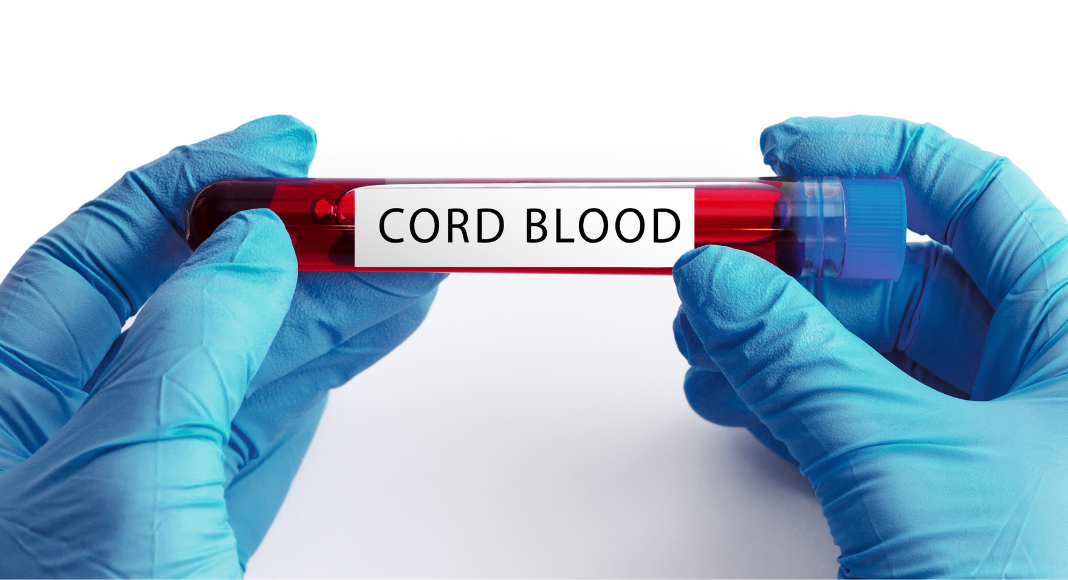It’s time to talk about cord blood. July is Cord Blood Awareness Month, which serves to educate expectant families on the importance of donating cord blood and its valuable stem cells.
 Personally, stem cell and cord blood banking was an unfamiliar subject until I was pregnant with my first, when my mother called me out of the blue to ask me if I would consider private cord blood banking. She was newly into her Parkinson’s Disease diagnosis after many years of being undiagnosed, and her research into taking control of her personal health led her to stem cells and cord blood banking. Admittedly, I knew nothing about the subject, but would certainly be open to it if it could help cure her or delay her decline in health.
Personally, stem cell and cord blood banking was an unfamiliar subject until I was pregnant with my first, when my mother called me out of the blue to ask me if I would consider private cord blood banking. She was newly into her Parkinson’s Disease diagnosis after many years of being undiagnosed, and her research into taking control of her personal health led her to stem cells and cord blood banking. Admittedly, I knew nothing about the subject, but would certainly be open to it if it could help cure her or delay her decline in health.
So, what are stem cells, and why have they become so important?
Essentially, the type of cells found in cord blood forms the immune cells in the body. Their primary function as self-renewing cells is to conquer internal repair and regeneration. They replace cells lost or damaged, which makes them an invaluable medical asset, especially when it comes to injuries and degenerative diseases, including spinal cord and brain damage, cancer, Parkinson’s, and Alzheimer’s.
Although we are just beginning to talk about stem cells in a mainstream way, the research has actually been around for thirty years or so. Due to controversy surrounding the research, people might not realize that cord banking does not involve the destruction of embryos. Once the umbilical cord is clamped and separated after birth, it is disposed of as medical waste. By collecting and donating either the blood, tissue or both, valuable cells are saved rather than thrown away.
What are the options for banking, and how is it collected?
If you and your family decide to pursue cord blood banking, there are two options: public and private banking. Public banking is a donation where no fees apply, as long as your doctor agrees to the collection process. It is painless for baby and mama and only takes a short time to collect several milliliters of blood from the cord, typically with a needle. It is then sealed and taken away by a carrier to be safely delivered to a bank, where it is then tested and stored.
As a public facility, qualified families or individuals in need would have access to these regenerative treatments that would otherwise be disposed of rather than utilized in important medical research. There are no public banks in South Carolina, so if you pursue public bank donation, you will have to go the mail-in route. You can find helpful information on donation sites, necessary documentation you would need from your doctor, deadlines for applications, and other guidelines on how to mail in your donation to a neighboring state here.
If you or anyone in your family is at risk of a life-threatening illness, then private banking might be a better option for you, as you’ll have direct access to a personal supply. Cord blood is commonly a partial match for parents, and typically a 75% match for full siblings. Private cord banking can come at a high cost, comparatively.
Recently, many reputable companies have changed their payment options to be more inclusive and flexible. Some of the most well-known companies now roll their upfront fees into lower monthly payments. Many of them also include lifetime storage versus paying for the storage annually. You can find the most affordable and best options for private banking on Very Well Family’s site. Additionally, in celebration of Cord Blood Awareness Month, some companies, like Maze Cord Blood, even offer special promotional discounts off the entire cost of the process for the month of July.
There are so many factors to consider during pregnancy, and determining whether to use cord blood at birth certainly adds another layer. Hopefully, by raising awareness and providing resources on the available options, we can continue to search for cures to illnesses, and contribute to families who need life-saving treatments. There is still so much work and research to be done, but by educating ourselves, being open-minded, and talking about things that might make us uncomfortable, we can ultimately make the best decision for ourselves.












